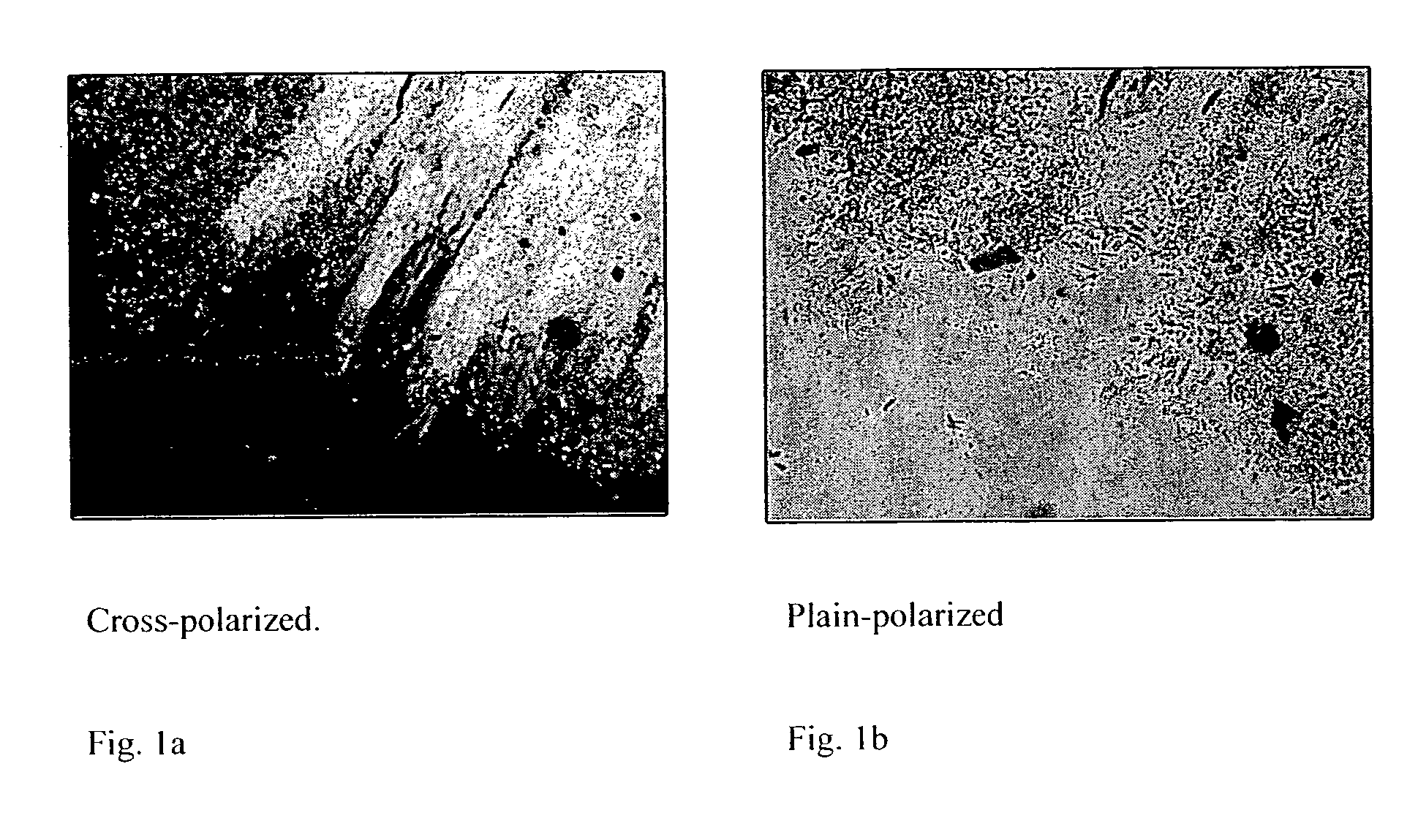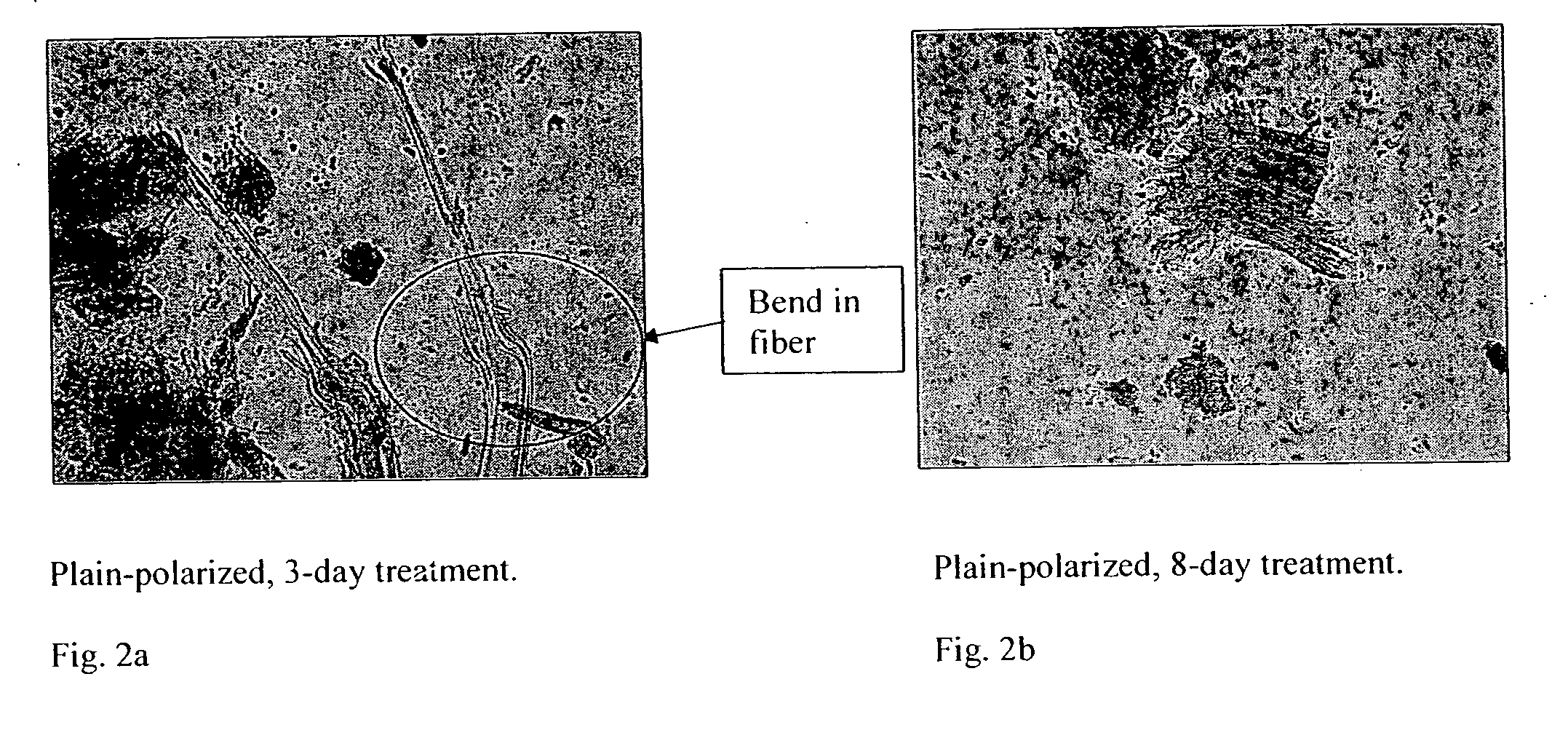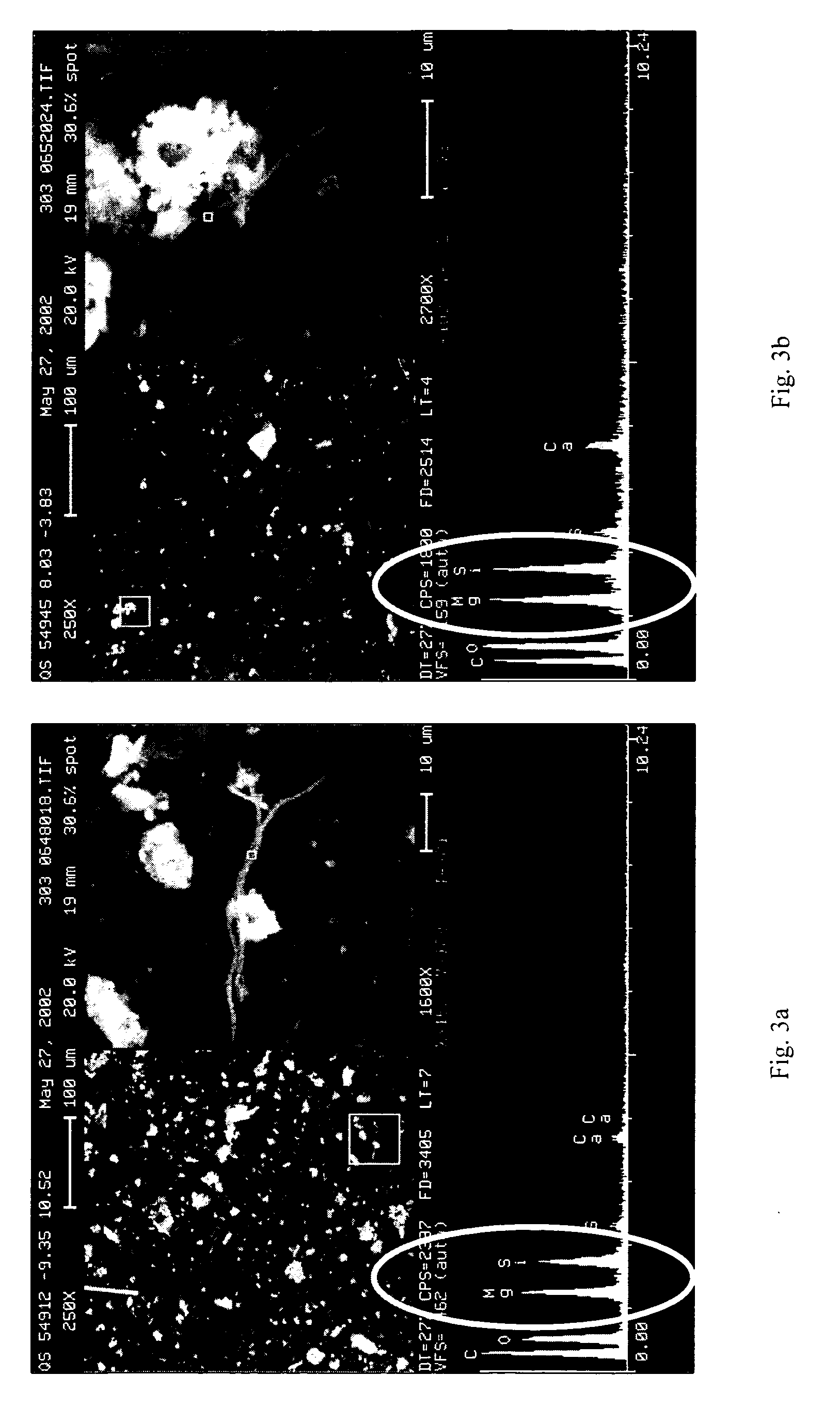In-situ treatment of asbestos-containing material
a technology of asbestos-containing materials and in-situ treatment, which is applied in the direction of solid waste disposal, etc., can solve the problems of prior art that fails to disclose the in-situ treatment of asbestos, fails to disclose the use of dicarboxylic acid such as oxalic acid, and fails to provide a means for maintaining structural stability, integrity, and functionality. , to achieve the effect of enhancing the structural stability of the treated material
- Summary
- Abstract
- Description
- Claims
- Application Information
AI Technical Summary
Benefits of technology
Problems solved by technology
Method used
Image
Examples
example 1
[0050] A portion of spray-on insulation material, containing approximately 10 weight percent asbestos, was treated with a solution containing oxalic acid and potassium silicate in a laboratory setting for a 6-day period. Polarized light microscopy (PLM) showed that following treatment, bundles of chrysotile fibers were separated or broken down, and their indices of refraction had changed. FIG. 1a shows a cross-polarized light image of the insulation before treatment. FIG. 1b shows a plain-polarized light image. FIG. 2a shows a plain-polarized image after 3 days of treatment. FIG. 2b shows a plain-polarized image after 8 days of treatment.
[0051] Scanning electron microscopy (SEM) was used to produce images and chemical composition spectra of the treated insulation material. SEM produces an electron beam that is used to generate images of the surface of a material in much the same manner as reflective light microscopy; the electron beam will also induce X-rays characteristic of the e...
example 2
[0054] A control experiment was conducted on a section of pipe surrounded with ACM to test the efficacy of an oxalic acid / potassium silicate solution. FIG. 9 presents a photograph of the insulated pipe prior to treatment. The insulation contained up to 70 percent chrysotile asbestos. The ACM was treated with a saturated solution of oxalic acid containing about 5 percent by weight of potassium silicate. The ACM was fully saturated on a daily basis approximately once every 24 hours for about 10 days, and allowed to dry between applications. FIG. 10 shows the decomposition of the pipe insulation after two applications. FIG. 11 shows the insulation removed from the pipe and laid out in sheets, and fully saturated with treatment solution. Magnesium continued to leach from the chrysotile fibers for approximately 10 days. Table 1 summarizes the treatment results. Two different treatment routes were used: 1) the treatment solution was sprayed onto the ACM (“saturated”), and 2) a portion of ...
example 3
[0055] Laboratory bench tests were conducted where chrysotile was submerged in a beaker of saturated oxalic acid and 5 Wt. % potassium silicate. In the first series a known amount of chrysotile (approximately 1 gram) was submerged in a known amount of solution (500 milliliters) and was evaluated to determine the amount of magnesium leached. Ten milliliters of solution was drawn off daily and characterized by inductively coupled plasma (ICP) analysis. The results indicate that 70 Wt. % of the magnesium is leached from the chrysotile within one week.
[0056] In a second series chrysotile was submerged in treatment solution and fibers withdrawn for analysis by TEM and SEM. FIG. 13 shows a SEM image of a treated chrysotile fiber bundle; after treatment (submerged) for 6 days in saturated oxalic acid and 5 Wt. % potassium silicate. The figure shows that the fiber morphology has been changed during treatment; splayed ends are not apparent, as seen in FIG. 14 of an untreated chrysotile fibe...
PUM
 Login to View More
Login to View More Abstract
Description
Claims
Application Information
 Login to View More
Login to View More - R&D
- Intellectual Property
- Life Sciences
- Materials
- Tech Scout
- Unparalleled Data Quality
- Higher Quality Content
- 60% Fewer Hallucinations
Browse by: Latest US Patents, China's latest patents, Technical Efficacy Thesaurus, Application Domain, Technology Topic, Popular Technical Reports.
© 2025 PatSnap. All rights reserved.Legal|Privacy policy|Modern Slavery Act Transparency Statement|Sitemap|About US| Contact US: help@patsnap.com



